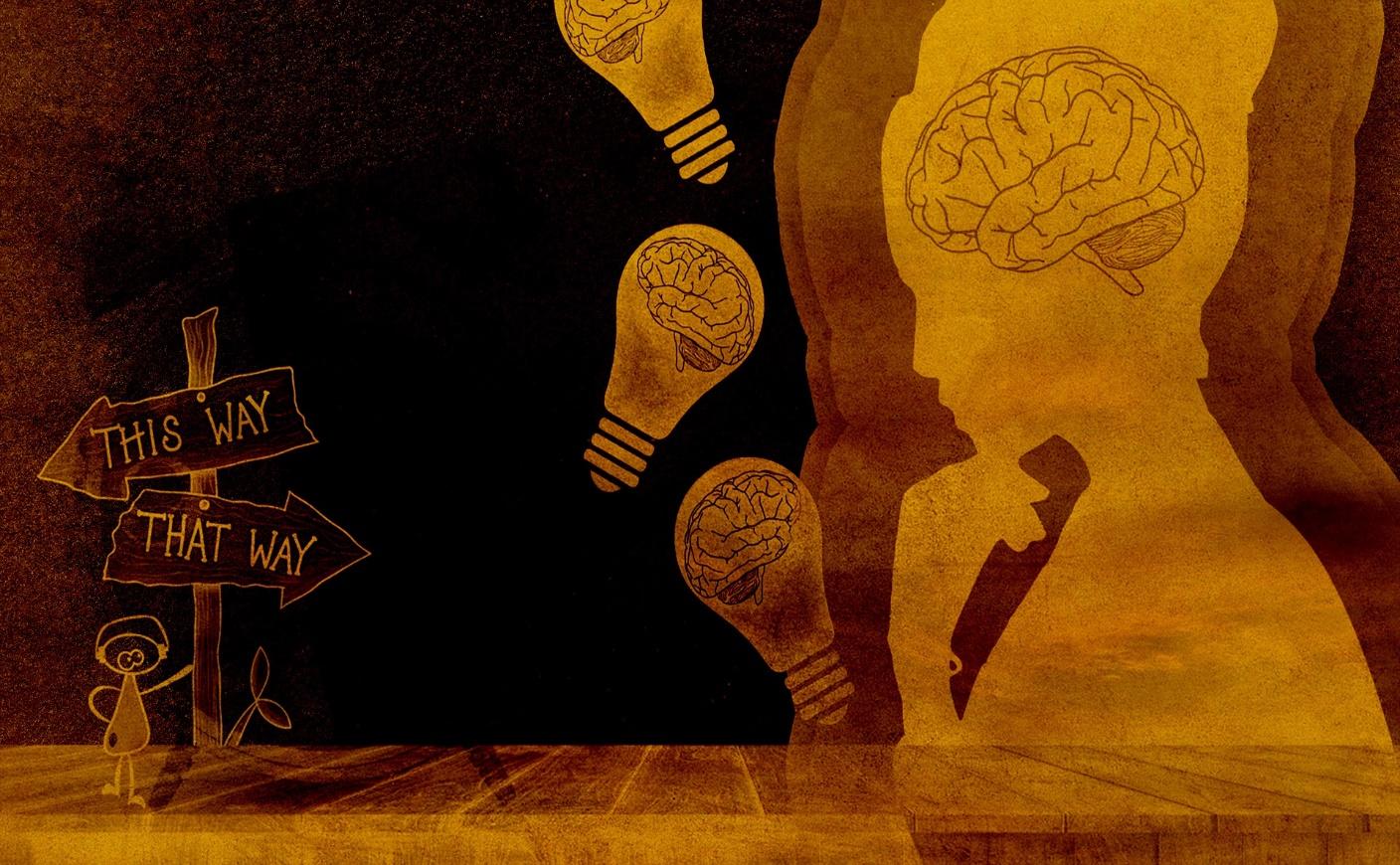“You cannot make progress without making decisions”, says American entrepreneur and motivational speaker Jim Rohn.
What are decisions? What is decision-making?

Every one of us should take decisions on a daily basis because it is an important part of our lives. Decisions affect all aspects of our life, from what to wear to what to eat to where we work to where we live and to whom we get married, and so on and so forth.
It is necessary to keep in mind that decision-making in an organizational context involves adequate knowledge, complete information, and the capacity to integrate and understand.
A course of action made from a set of alternative choices with the intention to accomplish and achieve organizational, managerial, or personal aims, goals and targets can be called a decision.
Brushing your teeth and taking a bath are examples of mundane and almost automatic decisions, whereas planning your daily schedule requires minor decision-making.
In a professional setting, on the other hand, decision-making skills can make or break your growth and future career development. Depending on your position in an organization, your decisions can have an impact on other employees as well as the overall image of the company.
Useful Resources: effective communication skills course | professional development courses
Decision-making is a vital aspect of an organization or modern marketing. Developing logical or sound decisions is believed to be the primary responsibility of every management.
All leaders make countless decisions, either consciously or unconsciously, and these decisions are fundamental to the role of a leader. In their management those decisions can either build the company stronger or break the company into pieces.
A good decision is determined solely by the outcome. In probabilistic models, however, the decision-maker is associated not just with the outcome value but also with the amount of risk associated with each decision.
Leaders and managers must arrive at decisions like trying to set organizational goals, deciding on key products, marketing strategies, role assignments, task timelines, etc., during the planning stage.
When plans fail to deliver the desired results are disrupted due to external issues or poor performance, it is up to the leaders and managers to get things back on track by making quick contingency decisions.

How important is Decision-Making?
Decisions are made at all levels of the organization, including the top, middle, and bottom. This encourages staff members to contribute to decisions through brainstorming or substitute solutions to the problem. As a result, it fosters innovative thoughts and ideas, which help the organization maintain a competitive position in the market.
Good decisions aid in increasing organizational productivity, which leads to increased profits. Surplus profits help to increase employee compensation benefits, which boosts morale and keeps each employee motivated.
According to iconic twentieth-century management guru Peter F. Drucker, "Whatever a manager does, he does through making decisions." That is precisely what we are discussing here.
Things and situations change all the time, whether you work in a small firm with a handful of employees or a large organization with thousands of employees. Old practices, rules, and personnel give way to new processes over time, especially in uncertain circumstances. However, in these changing circumstances, people must make decisions.

Decision-making and problem-solving have a strong relationship. It's important to avoid various difficulties before making crucial choices that could have a long-term influence on one's own goals and performance as well as that of the organization.
The interpretation of decision-making is strongly intertwined with leadership roles. Every action involves decision-making, whether you create plans or assemble group discussion, issue instructions or advice, or approve or reject strategies. As a result, it can be regarded as an essential function of an organization.
The significance of decision-making is made evident by its ability to allow for future forecasting. We can calculate the implications of a decision on a business's future growth when we make a decision using a systematic process.
Decisions usually fail because primary components are overlooked or neglected from the start. So, before a leader or a manager can make a decision, he or she must first fully comprehend their situation.
A leader should start by evaluating the decision in the context of the problem it is meant to solve. He or she must evaluate whether the stated problem is the real problem or merely a symptom of something more serious.
They should look beyond what seems obvious. It's possible that their goal can be approached in solitude, but it's more likely that there are several interconnected factors to consider.
Changes made in one department, for example, may have unintended consequences in another, making the change ineffective.
Working in a highly profitable enterprise will require you to make numerous critical decisions, such as pricing a product, determining which products to market, controlling the cost of production, advertising, financing decisions, establishing an investment strategy, and dealing with employee issues, etc.
The importance of decision-making is also discovered in how it aims to assist a leader in making a choice among multiple possibilities. Before making a decision, it is crucial to gather all accessible data and weigh its pros and cons. It is absolutely essential to focus on steps that can aid them in making sound decisions.
We frequently have a tendency to let popular choice or opinion influence us. Even if we believe that the group is not headed in the correct direction, sometimes we are afraid to voice our views out of concern about possible isolation.
Putting a decision into action necessitates answering several specific questions: Who must be informed of this decision? What steps must be taken? Who is going to take it? What must the action be in order for those who must perform it to be able to do so? The first and last of these questions are often frequently overlooked.
For instance, it's crucial to understand whether a decision is going to be permanent or just temporary. Because we know how a decision can affect individuals and their work within the organization. We can also estimate the decision's likely effect on a company's future growth.
We can evaluate the effects of various alternatives by implementing the proper strategies and moral decision-making procedures.
What is the nature of decision‐making?
The following traits and elements of decision-making can help us understand its nature:
- Making decisions is an intellectual process that calls for imagination, logic, assessment, and judgment.
- It is a decision-making process in which the best or most appropriate plan of action is chosen from a variety of accessible options.
- Making decisions is a procedure that is goal-oriented.
- For decisions to be successfully carried out, it is important and required to explain their consequences after decision-making.
- Participation of every personnel improves the effectiveness of the decision-making process.
Few Elements of Decision Making
The decision-making process involves the following factors:
- The person who decides has to take risks amidst a dilemma or an objective.
- The decision maker's values, attitudes, and personal objectives should be kept aside.
- The setting in which the choice will be made should be strictly professional.
- Proper communication is essential for the decision’s successful execution.
Some steps followed in the decision-making process:
- Identifying the issue.
- Identifying the constraints.
- Creating potential substitutes.
- Examining the options.
- Deciding which option is best.
- Executing the decision.
- Creating a mechanism for control and evaluation.
What makes an effective and successful decision-maker?
Lack of certainty is the fact of life and business; probability serves as a guide for living a "good" life and running a successful business.
The concept of probability plays an important role in decision-making, whether the problem is in business, government, society, or one's own everyday personal life.
The vast majority of decisions are made in the midst of uncertainty. Probability enters the process as a substitute for certainty - as a replacer for complete knowledge.
Decision makers can be divided into two categories. Some people adopt a methodical, logical strategy. Whereas some people have better intuition. They follow their feelings or an instinct on the best course of action. They might have some very original ideas for solving the issue, but they are unable to justify their choice.
Decision-making and problem-solving go hand in hand. Without deciding, an issue cannot be resolved.

Decision-making and problem-solving are also a continuing process that involve analyzing situations or problems, taking into account options, making decisions, and then acting on those decisions.
Decision-making and problem-solving have a strong relationship. It's important to avoid various difficulties before making crucial choices that could have a long-term influence on one's own goals and performance as well as that of the organization.
Sometimes the decision-making process is incredibly quick, with almost no time for mental contemplation. In other circumstances, the procedure can take weeks or even months to complete.
Finding the root of the issue is the first step in problem-solving.
Each decision type is based on substantially different success factors, so companies and decision-makers must approach each one differently.
For example, empowerment is essential for making effective decisions, whereas defined processes can slow down such decisions.

Cross-cutting decisions, on the other hand, require well-designed mechanisms and well-run decision meetings to be effective.
Sometimes, even if you think you know, you should double-check. It can be simple to focus on symptoms rather than causes at times. You use a logical approach to identifying the issue. You might enquire about the following:
- What have I or others observed?
- What was I or anyone else doing when the issue arose?
- Is this a standalone issue or a sign of a more significant, underlying issue?
- How have we already attempted to solve this issue?
For instance, the intern you are supervising approaches you and complains about a machine’s malfunction. Before contacting a repairman, you might wish to ask a few questions prior to calling a repair service.
Find out what the intern meant by malfunction or "not operating properly". Does he or she understand how to use the machine? Did they make sure the machine was plugged in? Has the fuse been examined? When did it last function? Who used it before the intern? Etc.
Although the basic problem-solving process remains intact, the problems discovered may vary.
In fact, the more complicated the issue, the more crucial it is to address the issue methodically. While planning and decision-making go hand in hand, planning is described as the process through which an organization establishes its short-term and long-term goals, designs, and implements strategies to attain success.
The decision of distribution of resources and personnel within an organization is one of the key planning components. Hence planning involves decision-making.
Uncertainty is almost always present when making business decisions.
Obviously, the more information a decision maker has, the better the decision.
Decision theory is based on treating decisions as if they were bets. This means we must weigh the importance of a particular outcome against its likelihood.
To follow the canons of decision theory, we must evaluate the value of a given outcome and its probabilities, thereby determining the consequences of our decisions.
It proposes that decisions should be made by computing utility and probability, as well as the ranges of options, and it also lays out strategies for making good decisions.
Leaders use their problem-solving abilities to make critical business decisions. We must take into account a variety of perspectives.
It is also necessary to separate our emotions from conversations with people who will influence our decision-making.
The essence of adept problem-solving abilities is the ability to make decisions quickly and effectively. We must conduct research and pay close attention to all details in order to match the facts with the situation at hand.
This will be one of the most important skills to have to make an informed decision. We must carefully consider all of the benefits and drawbacks.
To summarize, our daily life decisions allow us to improve at what we do. The majority of our decisions are based on our habits. We can, however, evaluate our choices, assess their impact, and engage in self-reflection by bringing them into the conscious domain. These actions eventually result in better decisions and outcomes. When making decisions, one should always consider the positive and negative consequences and prefer the positive outcomes.
Planning is a systematic process that assists organizations in carrying out all of their current and future activities in order to achieve their goals.
Decision-making is an important activity that benefits the organization by lowering risks in projects through faster and better decisions. It is successful as long as an adhesive holds the organization together, such as charismatic leaders or an organizational culture that values coherence and imposes stability. When any of these conditions are removed, the organizations fall into a self-defeating dilemma in which the process of effective decision-making is impaired, resulting in the company's loss of competitiveness. This prevents the organization from growing steadily.
Avoiding difficult decisions may seem easier at times, but doing so will result in a lot of conflicts. However, making decisions and accepting the consequences is the only way to maintain control over your professional or personal life and time.




















